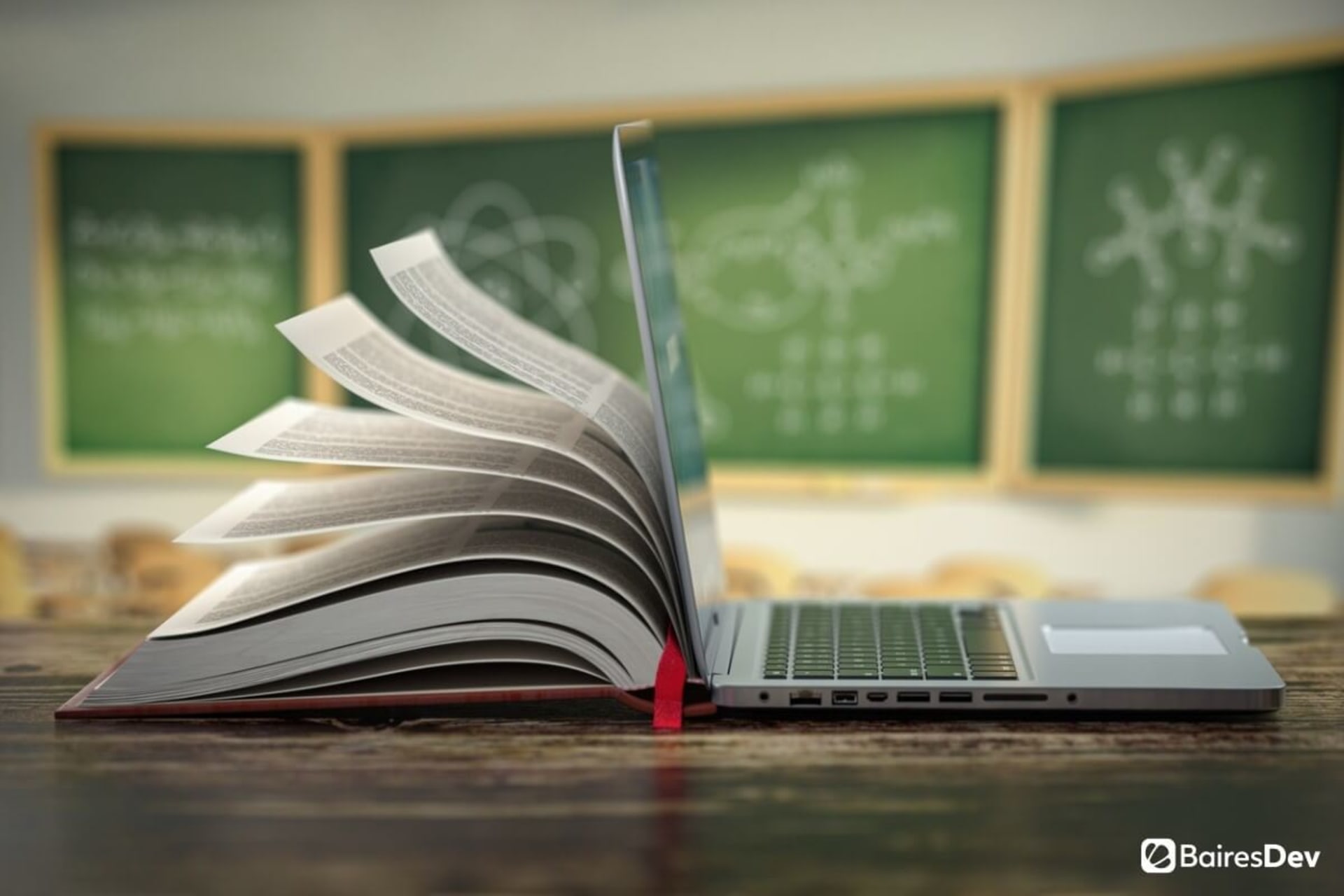Every industry has been affected by technology, often for the better. Arguably, no sector has been altered by tech more than education. The intersection of teaching, learning, and technology even has its own name: EdTech.
Computer-assisted learning (CAL) is one important part of the world of EdTech. Although CAL dates back decades, it has become far more prevalent in recent years and, in many ways, completely revolutionized education.
What Is Computer-Assisted Learning?
Computer-assisted learning describes the education that uses computers and other technologies and doesn’t require human intervention or interaction. It can take many different forms, as we’ll review below, and, despite its name, it involves a range of tools and devices, such as mobile devices, tablets, desktops, and others.

CAL incorporates different types of software and methodologies. It can be applied to a wide range of subjects, from language learning to math. It’s also used across education levels, including K-12, higher education, and adult courses.
Types of CAL
• Tutorials
Tutorial software provides information about diverse topics, essentially taking on the role of the instructor. In many cases, the technology quizzes and evaluates the student’s comprehension of the subject matter using an interactive process and delivering feedback.
• Gamified Learning

This type of CAL uses a gamified approach to help students learn the material. Through an interactive process, students may advance to new levels after demonstrating that they’ve grasped certain concepts or receive rewards along the way.
• Practice
Practice technology applies a digital approach to traditional methods of learning content, such as flashcards. The technology, for example, might quiz learners on different concepts.
• Demonstrations
Demonstrations tap into different senses, like visual and auditory, to present facts, information, concepts, and more. In some cases, students can become “immersed” in the experience, as is often the case with virtual or augmented reality technologies, both of which are used in teaching and learning.
Pros of Computer-Assisted Learning
1. Students and Instructors Can Receive Real-Time Feedback

CAL reveals solutions and assesses student performance immediately. Therefore, it can deliver immediate feedback to the learner, not only cataloging mistakes but also providing analytics that go a step beyond to help students improve. This is also beneficial for instructors, who can use this data as a tool to inform their own teaching and as well as their assessment of student performance.
2. The Learning Process Is More Interactive and Engaging
CAL takes on many different forms, and each one is meant to engage learners. Students are likely to respond to these new, exciting ways of gaining exposure to and absorbing content — often far more so than learning through traditional classroom instruction. Because there are so many different methods associated with CAL, the risk of boredom is greatly reduced.
CAL is usually interactive, too, which involves students and makes them agents of their own learning, increasing their stake in the education process.
3. Learning Can Be More Personalized
Many CAL programs adjust the approaches based on the individual learner’s progress. The software adapts according to how the student is learning, whether it’s a game, interactive demonstration, or assessment. Students can also go at a pace that works for them, and the program will adjust to meet them where they are.
A more personalized approach leads to both a higher level of engagement and stronger learning outcomes.
4. Technology Can Fill the Gaps for Students with Learning Differences
CAL has implications for students with a range of learning differences, too, giving greater access to those with different educational and learning needs. Because accessibility is such an important concern, CAL’s relevance is underscored in this arena. Through a personalized, adjustable approach, CAL tools can address a range of special needs.
Cons of Computer-Assisted Learning
1. CAL Can Become a Distraction
When students use CAL tools in the classroom, they may well have trouble focusing on the live teaching taking place. Getting students to pay attention is a constant complaint from instructors who teach at all levels, and when technology enters the picture, it’s even easier for students to get distracted.
2. It’s Expensive
In many cases, technology is expensive. CAL solutions may be difficult to purchase and implement because of the cost barrier associated with them. This is especially true when the tools are custom-built for a particular audience, although educators should keep in mind that there are some more cost-effective solutions.
3. Software Can Become Outdated Quickly
With frequent advances in technology and reassessments and reconceptualizations of material and content, there is a risk of applying technologies that could be irrelevant or outdated quickly. Given the high cost associated with CAL, educators who are considering implementing these tools should research solutions or work closely with developers to ensure that the technology can be altered to incorporate new content.
4. There’s a Risk of Over-Dependence on the Technology
CAL should augment instructor efforts, not replace them. While there are some contexts in which technology may play a greater role — for example, if an adult learner is attempting to learn a language on their own through a platform like Duolingo —, the tools and live instruction often go hand in hand. With CAL, there is a risk of both instructors and students becoming over-reliant on the technology to do the legwork.
Moreover, some teachers may feel that they have trouble finding tools that meet their lesson plan needs and attempt to alter their lessons accordingly, when the reverse should be true — they should find technologies that enhance and support their lesson plans.
In the best-case scenario, computer-assisted learning benefits and enhances instruction. But that doesn’t mean that it’s without its flaws. Ideally, instructors will find a balance between using technology to improve and supplement their own teaching, supporting both learners and teachers in education.







